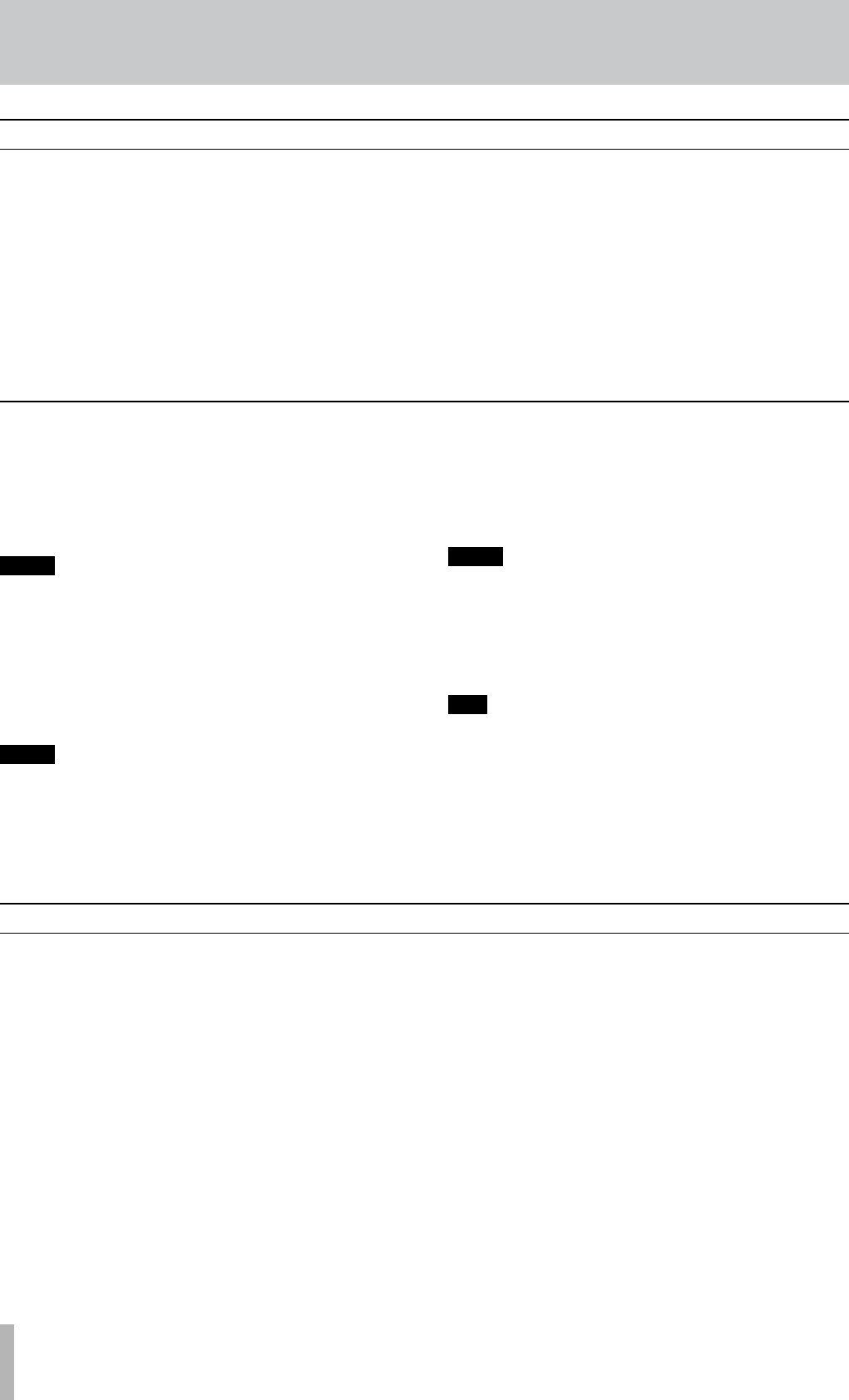
58 TASCAM 2488MKII
7 − Recorder
Making a bounce mix
1 Press the BOUNCE key. The key lights, and
BOUNCE MODE appears on the home screen.
2 Select the destination. Press the
REC keys for a
single track (mono bounce), or two tracks (or a
stereo track) for a stereo bounce.
NOTE
In bounce mode, until you press the REC key for the
bounce destination, no audio signal is sent to the
STEREO OUTPUT or the MONITOR OUTPUT.
3 Adjust the source tracks’ levels, EQ and pan posi-
tions, etc. for the bounce mix. Press the MUTE keys
(or lower the faders) on tracks that you do not want
to bounce.
NOTE
When you monitor the bounce, you are monitoring
the bounce destination. If any EQ etc. is applied to the
destination track(s), this is added to the signal you
are monitoring. You may therefore want to make sure
that the EQ is turned off on the destination tracks.
4 While watching the level meter of the bounce
destination track on the home screen, use the
SUB fader to adjust the final recording level (the
sub mix bus output level becomes the bounce mix
recording level).
NOTE
While bouncing, the bounce destination track fader
and STEREO fader affect the monitoring volume, but
they do not affect the recording level.
5 When the bounce is done, press the BOUNCE key
again to return to ordinary recording mode.
T I P
If you press the sub mixer section SELECT key to open
the SUB MIXER screen, you can confirm that REC is
selected as the sub mix bus assignment destination.
By assigning input channels (A–H) to the sub mixer
during track bounce, input signals can also be sent
to the bounce destination track (see "Sub mixer" on
page 35).
Bouncing tracks
Like many multitrack recorders, the 2488MKII allows you
to “bounce” a collection of recorded tracks to a smaller
number of tracks. This allows you to record more than 24
tracks (but once bounced onto a track or pair of tracks, the
original tracks cannot be separated again).
With the 2488MKII, any track or tracks other than the
bounce destination track can be a source track. Therefore,
when bouncing to a stereo track, the remaining 22 tracks
can be used as recording sources. Likewise, a mono
bounce track can use the other 23 tracks as sources.
In bounce mode, the recording source track signals pass
from the mixer channels, through the sub mix bus, to the
bounce track.
While you are performing a bounce operation, you cannot
use the sub mixer facility (“Sub mixer” on page 35).
About track editing
One of the most useful features of a disk-based recorder
such as the 2488MKII is the ability to edit material easily.
When working with a stereo tape recorder in the past, the
usual editing method involved a white pencil, a razor blade
and sticky splicing tape. This was not an easy process, and
was very difficult to undo if there were any mistakes.
The 2488MKII allows you to edit songs, copying and
moving material from one part of a song to another. This
editing is known as non-destructive editing, meaning that
the operation does not actually destroy data, and you can
undo mistaken editing operations easily.
If you have ever used a word-processor on a computer, you
will probably find most of the 2488MKII’s editing opera-
tions pretty simple. If you have never used a computer, the
2488MKII’s editing operations are nothing to be scared
about—just read through this section to see how it all works.


















